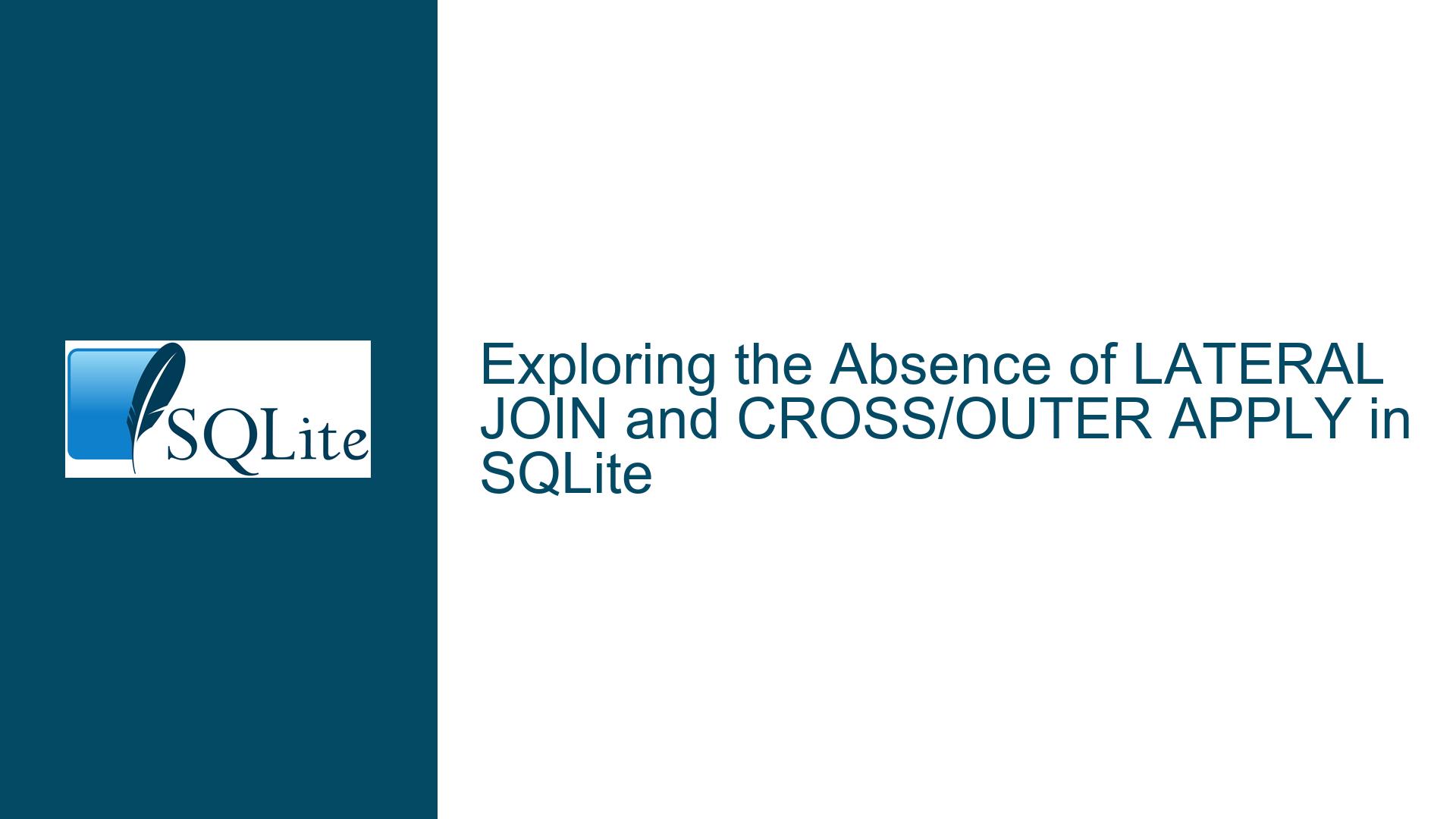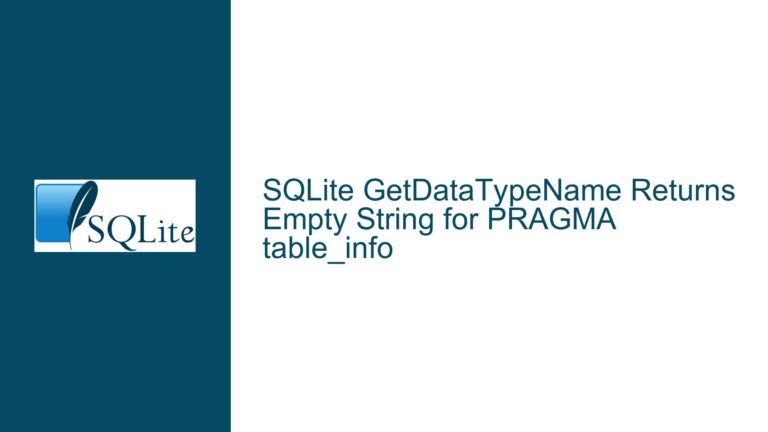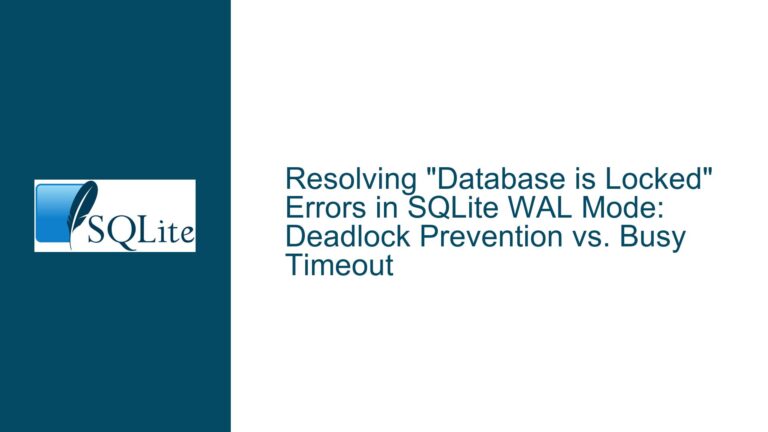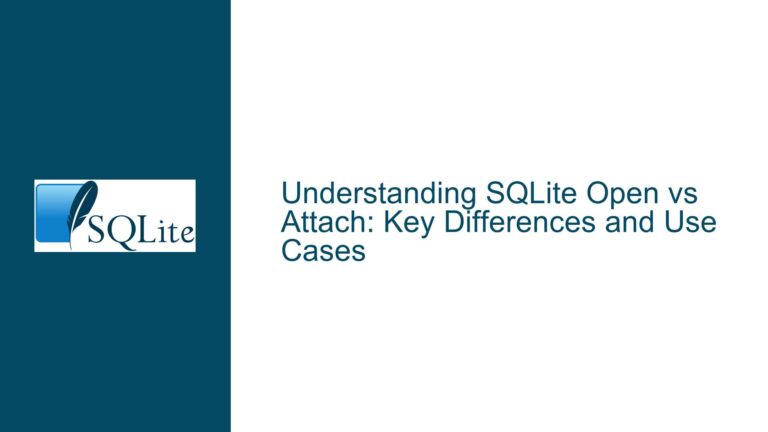Exploring the Absence of LATERAL JOIN and CROSS/OUTER APPLY in SQLite
Understanding the Need for LATERAL JOIN and CROSS/OUTER APPLY in SQLite
The absence of LATERAL JOIN and CROSS/OUTER APPLY in SQLite has been a topic of discussion among database developers and SQL enthusiasts. These features, which are available in other database systems like PostgreSQL and Microsoft SQL Server, provide powerful capabilities for querying and manipulating data. LATERAL JOIN allows a subquery in the FROM clause to reference columns from preceding tables in the same FROM clause, enabling more complex and dynamic queries. Similarly, CROSS APPLY and OUTER APPLY in MS SQL Server allow for the execution of a table-valued function for each row returned by the outer table expression, which can be incredibly useful for row-by-row processing.
In SQLite, the lack of these features can be a limitation when trying to perform certain types of queries that require row-by-row processing or when needing to reference columns from preceding tables in a subquery. This limitation can lead to more complex and less efficient workarounds, such as using multiple nested subqueries or temporary tables, which can be both cumbersome and performance-intensive.
Potential Reasons for the Absence of LATERAL JOIN and CROSS/OUTER APPLY in SQLite
There are several potential reasons why SQLite has not yet implemented LATERAL JOIN or CROSS/OUTER APPLY. One of the primary reasons could be the focus on simplicity and minimalism, which are core principles of SQLite. SQLite is designed to be a lightweight, embedded database engine that is easy to use and requires minimal configuration. Adding complex features like LATERAL JOIN and CROSS/OUTER APPLY could go against this philosophy, as they would increase the complexity of the database engine and potentially make it less suitable for its intended use cases.
Another reason could be the limited resources available for the development of SQLite. SQLite is maintained by a small team of developers, and prioritizing which features to implement can be challenging. Features that are not widely requested or that have viable workarounds may not be high on the priority list. Additionally, implementing these features would require significant changes to the SQLite query planner and optimizer, which could introduce new bugs and require extensive testing to ensure stability and performance.
Furthermore, the lack of demand from the SQLite user base could also be a factor. While LATERAL JOIN and CROSS/OUTER APPLY are powerful features, they may not be as commonly used in the types of applications that typically use SQLite. Many SQLite users may not even be aware of these features or may not find them necessary for their use cases. As a result, there may not be enough demand to justify the effort required to implement them.
Exploring Workarounds and Alternatives for LATERAL JOIN and CROSS/OUTER APPLY in SQLite
Given the absence of LATERAL JOIN and CROSS/OUTER APPLY in SQLite, developers often need to find alternative ways to achieve similar functionality. One common workaround is to use correlated subqueries, which allow a subquery to reference columns from the outer query. While correlated subqueries can achieve similar results to LATERAL JOIN, they can be less efficient, especially when dealing with large datasets, as they may require the subquery to be executed multiple times.
Another approach is to use temporary tables or Common Table Expressions (CTEs) to break down complex queries into simpler steps. By storing intermediate results in a temporary table or CTE, developers can reference these results in subsequent queries, effectively simulating the behavior of LATERAL JOIN or CROSS/OUTER APPLY. However, this approach can also be less efficient and may require additional storage and processing resources.
In some cases, it may be possible to rewrite the query to avoid the need for LATERAL JOIN or CROSS/OUTER APPLY altogether. For example, by restructuring the data or using different join types, developers can often achieve the same result without relying on these advanced features. However, this approach requires a deep understanding of the data and the query requirements, and it may not always be feasible.
For developers who require the advanced functionality provided by LATERAL JOIN and CROSS/OUTER APPLY, one option is to consider using a different database system that supports these features. PostgreSQL, for example, offers robust support for LATERAL JOIN, and Microsoft SQL Server provides CROSS APPLY and OUTER APPLY. While switching database systems may not always be practical, it can be a viable solution for applications that require these advanced query capabilities.
In conclusion, while the absence of LATERAL JOIN and CROSS/OUTER APPLY in SQLite can be a limitation, there are several workarounds and alternatives available. By understanding the potential reasons for their absence and exploring different approaches, developers can still achieve their desired results, even if it requires a bit more effort. As SQLite continues to evolve, it is possible that these features may be added in future releases, but for now, developers must rely on the available tools and techniques to work around these limitations.






